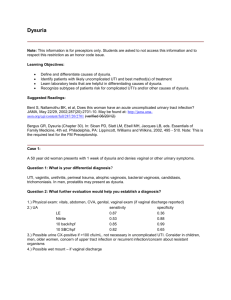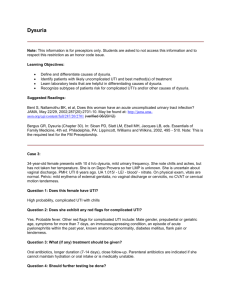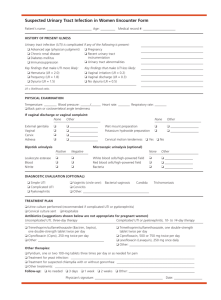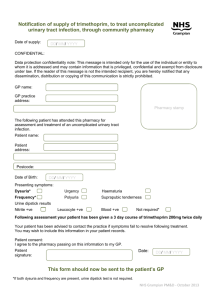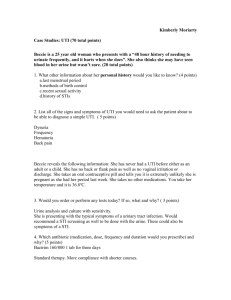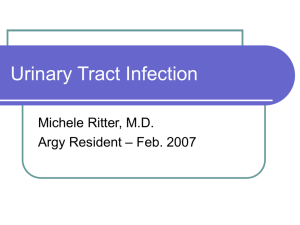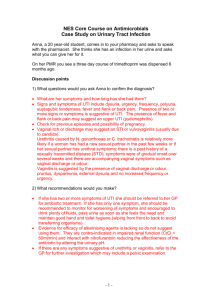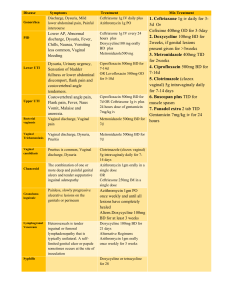Case 2 - University of Iowa Carver College of Medicine
advertisement
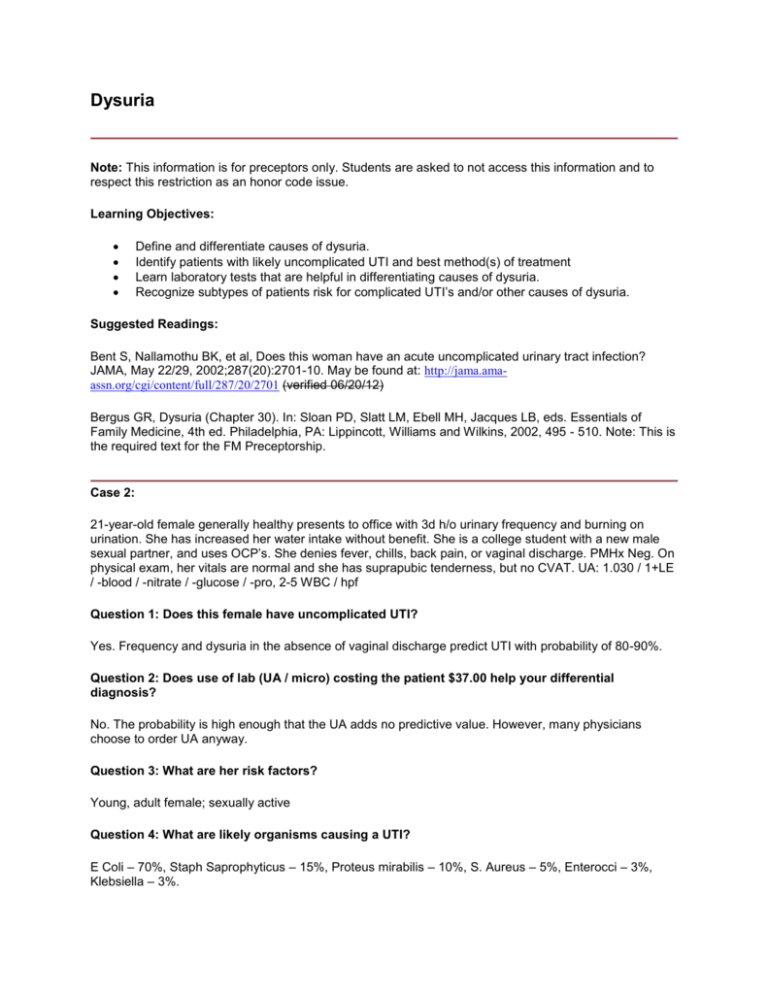
Dysuria Note: This information is for preceptors only. Students are asked to not access this information and to respect this restriction as an honor code issue. Learning Objectives: Define and differentiate causes of dysuria. Identify patients with likely uncomplicated UTI and best method(s) of treatment Learn laboratory tests that are helpful in differentiating causes of dysuria. Recognize subtypes of patients risk for complicated UTI’s and/or other causes of dysuria. Suggested Readings: Bent S, Nallamothu BK, et al, Does this woman have an acute uncomplicated urinary tract infection? JAMA, May 22/29, 2002;287(20):2701-10. May be found at: http://jama.amaassn.org/cgi/content/full/287/20/2701 (verified 06/20/12) Bergus GR, Dysuria (Chapter 30). In: Sloan PD, Slatt LM, Ebell MH, Jacques LB, eds. Essentials of Family Medicine, 4th ed. Philadelphia, PA: Lippincott, Williams and Wilkins, 2002, 495 - 510. Note: This is the required text for the FM Preceptorship. Case 2: 21-year-old female generally healthy presents to office with 3d h/o urinary frequency and burning on urination. She has increased her water intake without benefit. She is a college student with a new male sexual partner, and uses OCP’s. She denies fever, chills, back pain, or vaginal discharge. PMHx Neg. On physical exam, her vitals are normal and she has suprapubic tenderness, but no CVAT. UA: 1.030 / 1+LE / -blood / -nitrate / -glucose / -pro, 2-5 WBC / hpf Question 1: Does this female have uncomplicated UTI? Yes. Frequency and dysuria in the absence of vaginal discharge predict UTI with probability of 80-90%. Question 2: Does use of lab (UA / micro) costing the patient $37.00 help your differential diagnosis? No. The probability is high enough that the UA adds no predictive value. However, many physicians choose to order UA anyway. Question 3: What are her risk factors? Young, adult female; sexually active Question 4: What are likely organisms causing a UTI? E Coli – 70%, Staph Saprophyticus – 15%, Proteus mirabilis – 10%, S. Aureus – 5%, Enterocci – 3%, Klebsiella – 3%. Question 5: What should you use to treat her? Antibiotics (Level A rec.) Cranberry juice - push fluids (Level C rec.)
